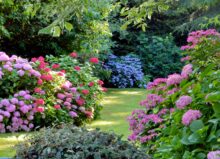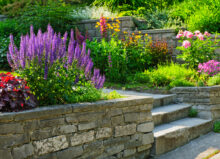The Importance of Regular Pruning: Keeping Your Trees, Shrubs, & Plants Healthy
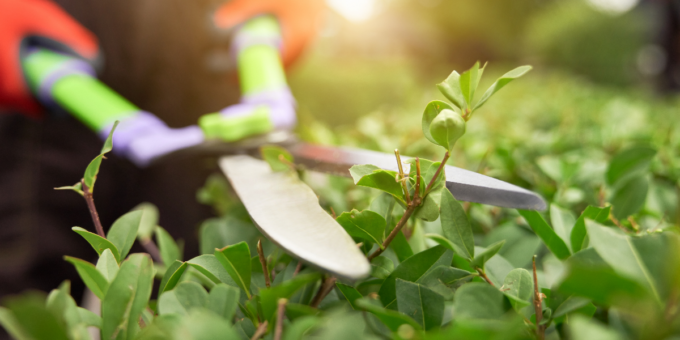
Between work, vacation, and taking care of your home, finding time to take care of your landscape is hard. But routine landscape maintenance pays off. In fact, according to the most recent Outdoor Remodeling Impact Report by the National Association of Realtors®, standard lawn care services and landscape maintenance have the most significant cost recoveries of any outdoor project.
Routine maintenance, which includes upkeep/pruning of trees, shrubs, and plants, not only improves the health and appearance of your landscape but also offers an impressive return on investment (ROI).
In this article, we’ll cover the primary benefits of routine pruning and provide helpful tips for the next growing season.
How Pruning Promotes Plant Health
Regular shrub, plant, and tree pruning is necessary for many reasons.
First, it keeps your plants healthier by removing dead or diseased growth, sections that have been damaged from pests or nutrient deficiency, and old or unproductive branches (from fruit, nut, and flower-bearing plants).
Pruning also enhances the beauty of your trees, bushes, and plants, especially when trimmed into geometric patterns.
Lastly, routine pruning improves air circulation and allows more sun and rainwater to flow throughout the plant, encouraging new growth.
Tips for Tree & Shrub Pruning
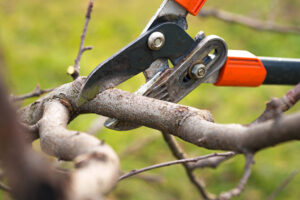
Frequency: As a rule of thumb, deciduous shrubs should be given at least one assertive pruning every growing season, while deciduous trees are typically pruned every one to five years, depending on the tree’s age.
Timing: Early Spring. You should prune most trees and shrubs in the early spring before the buds start to break. Heavily pruning a tree during late spring or summer (the growing seasons) may starve the tree by removing the leaves needed to make food.
With shrub and tree pruning, your goal is to remove damaged, dead, or diseased branches and sections and add to the plant’s shape and form. Both these objectives will improve the health and the appearance of your landscaping.
Here are some important do’s and don’ts for shrub and tree pruning:
- Do make limb and branch cuts at a 45-degree angle.
- Do use a sharp, clean cutting tool—dirty tools increase the risk of disease.
- Don’t cut too close to a bud, which can cause the bud to dry out or rot. Instead, plan to cut 1/4 or 1/2 inches above a new bud, which helps stimulate new growth.
- Do consider timing (such as before or after flowering), the tree or shrub species, and the type of pruning (cut back, renewal, shearing).
- Don’t remove more than one-third of the plant’s bulk in a year when making thinning cuts or removing whole branches.
- Do use heading cuts (removing just part of a shoot or shortening a branch to just before a bud) to encourage growth in a certain direction.
- Don’t forget to counter a lopsided shrub or tree. To thin overgrown bushes, start by progressively eliminating branches starting from the centermost base of the shrub, scheduled over 2 or 3 years.
Tips for Pruning Plants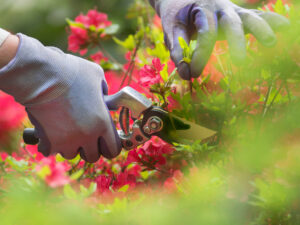
Frequency: Perennials should be pruned back after each growing season, while annuals should be removed from the ground as they will not grow back the following year unless they’ve reseeded.
Timing: Generally Early to Late Fall. Plan to prune your plants from mid-September through late October. The plants should be entering dormancy. Doing it as early as possible after dormancy will help prevent pruning during the colder late autumn and winter temperatures. It’s also possible to prune during early spring, but pruning in the fall will help spur a healthier growing cycle the following year.
Plants are pruned to help them stay disease-free and to remove any dead or damaged plant portions. Also, opening up dense plant growth will improve airflow and reduce the chance of root rot. Additionally, trimming old, dead growth means your plants will produce more flowers during their next growth season, as they won’t have been deprived of sunlight during the rough winter months.
Tips for pruning perennials include:
- Do deadhead older plants during the growing season. Deadheading is when you remove faded and/or dying flowers. This process helps extend the plant’s bloom period and helps promote repeated growth. Removing the weaker flowers within plants like Columbine, Black-Eyed Susan, and Roses forces the plant to use its available food and energy to produce new and bigger blooms.
- Don’t prune your roses in the fall. When rose bushes are pruned, it encourages new growth. Instead, plan to prune your roses in the spring once the temperatures are warmer.
- Do aggressively cut back certain plants. Perennials like Lavender, Bee Balm, Aster, and Black-Eyed Susan must be aggressively cut back in the winter to improve growth during the following season.
- Don’t aggressively cut back marginally hardy perennials, which are plants not quite suited for cooler USDA Hardiness Zones. For example, if you have a plant with a USDA Hardiness Growing Zone of 6 and you are in Zone 5, your winters may be too cold for that plant. To help that plant survive the winter, you must leave some of its foliage to help insulate and protect its roots from the cooler temperatures and snow.
- Do prune to increase flower size. Remove side buds from perennials to produce larger flowers and a longer stem. This will add vertical height and visual excitement to flower beds during the new growing season.
- Do pinch to stagger blooming. To delay blooming for up to three weeks, pinch the flower stalks back to create a staggered blooming season. You can pinch back some perennials, like Hollyhocks, Aster, and Daylilies, to ensure your garden is colorful throughout the late summer and early fall.
- Don’t over-prune ornamental grasses. Warm-season grasses should be cut back in the fall, while cool-season grasses should be cut back in the spring. If you have an evergreen variety, you will not need to prune it as often.
Get More Tips From Design One
Understanding when and how to prune for greater plant health and more vibrant blooms means paying close attention to how your trees, shrubs, and plants grow from season to season.
If you need help beautifying your landscape and improving its health, turn to a professional landscaping company like Design One. We’ve been helping homeowners throughout Michigan enhance their landscapes for more than 30 years through our design and maintenance services.
Contact us today to speak with one of our experts, or visit our blog to view more landscape maintenance and design resources.
As a residential and commercial landscaping company in Michigan, we’re experienced in both property care and landscaping design. With over 40 years of experience in the industry, Design One is great source of information when it comes to your Michigan lawn care needs! From preliminary design mapping, to irrigation and the types of plants you might want on your priority, we cover it all.


